Papers by Pil and Galia Kollectiv
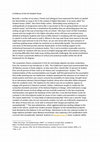
Corridor 8, 2024
As a result of the introduction and exponential rise of tuition fees, many
alternatives to univer... more As a result of the introduction and exponential rise of tuition fees, many
alternatives to university have sprung up that offer certain aspects of art
education without the institutional strings attached. The one thing few of
these have emulated, though, is the dissertation. Universities themselves,
under increasing financial pressure due to the withdrawal of government
subsidies, have reduced the provision of contextual studies modules and
replaced much of the writing submitted by students with less structured
‘research files’ and ‘journals’ that can be accepted as evidence of academic
engagement, often without being very rigorously examined on their argumentation by time-strapped lecturers with impossible workloads. Insisting on the essay as a separate component, alongside close reading seminars and other discursive modes of teaching, is by no means a solution in and of itself. But if we are not to be handmaidens to neoliberalism, rather than removing the obstacle, it would behove educational institutions to provide students with the training necessary to make fulfilling this requirement not only possible, but enjoyable and fruitful.
Hayward Gallery Opening times during MIRRORCITY Events Weekend Thursday, Friday and Saturday 11am... more Hayward Gallery Opening times during MIRRORCITY Events Weekend Thursday, Friday and Saturday 11am-9pm Sunday 11am-7pm Book Tickets £12 Full price with Gift Aid £10.90 Full price without Gift Aid Concessions available southbankcentre.co.uk/mirrorcity 0844 847 9910 Transaction fees apply: £1.75 online; £2.75 by phone. For more information on tickets, groups and school visits go to southbankcentre.co.uk/mirrorcity Southbank Centre is a registered charity no. 298909
Routledge eBooks, Jun 13, 2018
The essay argues that reenactment of past events and artworks can be a critical strategy. Using t... more The essay argues that reenactment of past events and artworks can be a critical strategy. Using theoretical writings by Friedrich Nietzsche and Guy Debord, the text examines the film Alien: Resurrection to propose a mode of repetition that doesn't collapse into the cyclical production of novelty dictated by the logic of the market.
129 THE WORK OF ART IN THE AGE OF MECHANICAL REPRODUCTION Walter Benjamin Source: H. Arendt (ed.)... more 129 THE WORK OF ART IN THE AGE OF MECHANICAL REPRODUCTION Walter Benjamin Source: H. Arendt (ed.), Illuminations, H. Zohn (trans.). London: NLB, 1973 [1936], pp. 217-242. Our fine arts were developed, their types and uses were estab- lished, in times ...

The exhibition presents the full Future Trilogy which was completed in 2009. The trilogy is based... more The exhibition presents the full Future Trilogy which was completed in 2009. The trilogy is based on the opening of a new IKEA store in Edmonton, London in November 2005. IKEA celebrated with a twenty-four hour launch accompanied by significant price reductions on leather sofas. But when six thousand people arrived to compete for the discount a riot ensued which injured sixteen shoppers and required the store to be closed after just thirty minutes. The Future Trilogy takes this event as the starting point to speculate on a future where the popular fascination with modern designer furniture has morphed into state religions underpinned by the ideals of the early twentieth century avant-garde. The exhibition also presents their 2010 work Co-Operative Explanatory Capabilities in Organizational Design and Personnel Management which narrates a fictional story of a company that adopts highly experimental approaches to achieving worker productivity. The project investigates the place of creativity in efficiency management and the operation of bureaucratic systems in a post-industrial work environment. The Kollectiv's pseudo documentary creates a careful blend of fact and fiction through the combination of a distinctive BBC narrator's voice with imagery sourced from an online photographic archive for an early computing company. The story becomes increasingly provocative as more and more of the bizarre antics of the company employees are revealed, leading to the members of the company eventually forming a religious cult.
Through close reading of Marx and a brief survey of post-Fordist theorisations of the relationshi... more Through close reading of Marx and a brief survey of post-Fordist theorisations of the relationship between art and labour, the essay proposes that artists must abandon humanist attachments to the exceptionalism of creative labour and forge an anti-humanist solidarity with others as workers in general.

ABSTRACT: The Institute of Psychoplasmics is a group exhibition dealing with cults, rituals and t... more ABSTRACT: The Institute of Psychoplasmics is a group exhibition dealing with cults, rituals and the metaphor of the body politic. A key interest of the project is the way in which cultic groupings challenge the integrity of the social body by producing another within it. The exhibition, book and events explore parallels between the operations of new religious movements in the context of neo-liberalism and the forms of collectivity posited by contemporary art. These issues were addressed through a gallery display, academic essays, discussion, adult and children focused workshops and live performance event. The exhibition design, which considered the gallery as a research institute, itself investigated strategies of collaboration and psycho-social manipulation. The show was curated by Pil and Galia Kollectiv and commissioned by the Pump House Gallery in London and supported by Outset, Arts Council England and the Henry Moore Foundation. The exhibition included work by a.a.s., Insectoid, Diann Bauer, Amanda Beech, Mikko Canini, Seth Coston, Rod Dickinson, Pil and Galia Kollectiv, Tai Shani, Francis Upritchard and Roman Vasseur. A publication edited by the curators, features writing by Suhail Malik, Amanda Beech, Pil and Galia Kollectiv, Gilad Elbom, Tom McCarthy, Emily McMehen and Travis Jeppesen.

Another Proof of the Preceding Theory was produced as part of a residency run by Artists in Arche... more Another Proof of the Preceding Theory was produced as part of a residency run by Artists in Archeology in conjunction with the Stonehenge Riverside project. The film explores the relationship between science, work and ritual, imagining archaeology as a future cult. As two robed disciples stray off from the dig, they are drawn to the drone of the stones and proceed to play the henge like a gigantic Theremin. Just as a Theremin is played with the hand interfering in an electric circuit and producing sound without contact, so the stones respond to the choreographed bodily proximity. Finally, one of the two continues alone to the avenue at Avebury, where the magnetic pull of the stones reaches its climax. Shot on VHS, the film features a score by Zuzushi Monkey, with percussion and theremin sounds mirroring the action. The performers are mostly artists and archeologists from the art and archaeology teams. The archeologists were encouraged to perform their normal work in the robes, in an attempt to explore the meeting points of science and ritual and interrogate our relationship to an ultimately unknowable prehistoric past where activities we do not understand are relegated to the realm of religion. Stonehenge has unique acoustic properties, it’s large sarsen stones are finely worked on the inside, left rough on the outside, intensifying sound waves within the inner horseshoe, but since their real use, having been built over centuries, remains ambiguous, the film proposes that our attempts to decode them may themselves become encoded in their cumulative meaning for future researchers.
Punctum Books, Oct 16, 2018

Slavic Review, 2018
Amy Bryzgel's history of performance art in eastern Europe, the second book-length study the auth... more Amy Bryzgel's history of performance art in eastern Europe, the second book-length study the author has devoted to the topic, is a must-consult for anyone interested in the subject. The amount of performances, actions, happenings, and body art that Bryzgel catalogues and interprets is staggering, and most are interpreted competently. And while the larger nations of the former eastern Europe with their by now more or less established canons receive much attention, performance practices in the "peripheral margins"-Albania, Macedonia, Belarus, and the Baltics-are also discussed, sometimes at length. Here, Bryzgel's book additionally performs the crucial task of canonizing performances that have, in some instances, received little or no critical mention in art historical accounts so far. The author lays the foundations for her argument through a (short) foray into the historical avant-garde that forms part of an introductory first chapter, organized more or less chronologically. Subsequent chapters abandon strict chronological order and are organized around more synthetic themes such as "The Body," "Gender," "Politics and Identity," and "Institutional Critique." If these headings eschew a historical perspective, Bryzgel avoids the impression that they should be treated as unhistorical givens, or that their east European inflections can be subsumed without loss under the history of their western counterparts. This said, the author's seamless integration of post-1989 performance with its post-Wende counterpart-the book includes performances up to around 2012-while it mitigates the obsession with binary division that characterizes cold war art history, also poses a series of problems (some of them are acknowledged in the preface), inasmuch as on occasion it makes for juxtapositions of works and practices that can seem far apart both conceptually and historically. The author's deliberate decision to not treat 1989 as an absolute rupture, which has much to be said for it, also complicates the use (and usefulness) of the term eastern Europe, which, it must be acknowledged, after the fall of the Berlin Wall shifted from being shorthand for the west's "small Other" during the cold war to serving as a convenient label for a global art market hungry for regional differentiation. The issue is important because it raises the fundamental question if, after 1989, we need a history of east European performance art at all, as opposed to say, a history of Polish, French, Albanian performance, or, maybe, a history of performance art in Europe. The impetus behind Bryzgel's study is the one that currently motivates so many revisionist art histories in the former eastern Europe: the frequent exclusion of the region from the history of western postwar performance art. Of course, it is not a matter here of an absolute difference between east and west, but of what elsewhere I have called "conditional similarity"-the varying degrees to which art in the region, despite its phenomenological similarity, also differs from a western model that is itself neither universal nor undifferentiated. Acknowledging this fact, Bryzgel is at her best when she puts these asymmetries to practical use, avoiding their reduction to the common cliché regarding "freedom" versus "oppression" that all too often becomes the interpretative model of choice for art historians at pains to explain how east European postwar art differs from its western counterpart. Indeed the author mentions some fascinating instances where east European performance artists attacked such mythmaking already at the time of the cold war, precisely by historicizing the west (I'm thinking for instance of her discussion of Tamas Szentjóby's 1970s amazing work Sit Out-Be Forbidden which, as Bryzgel notes, makes an explicit reference to Bobby's Seale's gagging in a US courtroom).

xero, kline & coma is an artist run project space at 258 Hackney Road, London. It’s program, ... more xero, kline & coma is an artist run project space at 258 Hackney Road, London. It’s program, curated by Pil and Galia Kollectiv, focuses primarily on solo exhibitions by internationally established as well as emerging artists. Work by recent graduates King Conny Wobble and David Steans is being shown alongside projects like the Museum of American Art – Berlin, previously included in the Venice and Istanbul Biennales, Jeffrey Vallance, whose recent solo exhibition was at the Warhol Museum, and Plastique Fantastique, whose work has been shown at Tate Britain and the Pratt Manhatten Gallery, New York, with the aim of raising the profile of lesser known artists and allowing others to experiment with work that more institutional contexts don’t always permit. Some of the themes this program has explored have included fictional identities, a-chronological art histories and the mediation of ritual in time-based media. A commitment to critically engaged art is also central to the ethos of the space, and future shows include an exploration of unionism in art by Sophie Carapetian. As well as displaying new work, the gallery hosts events, talks and screenings. Most recently these have included meetings of the Political Currency of Art research group, a discussion and film screening dealing with the theme of ‘hostile objects’ led by Evan Calder Williams and Marina Vishmidt, a book launch for New Lines of Alliance, New Spaces of Liberty by Antonio Negri and Felix Guattari and an event dedicated to the theatre work of Slovenian art collective NSK, featuring a screening of unreleased documentation and a discussion about the future of total performance.
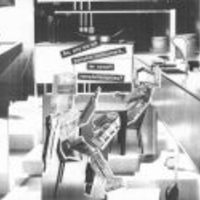



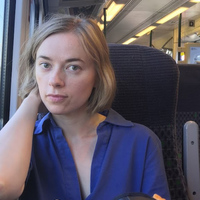

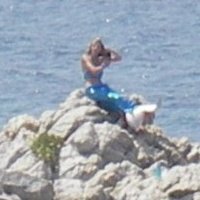
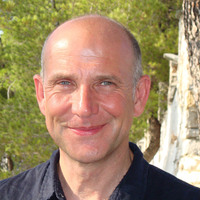
Uploads
Papers by Pil and Galia Kollectiv
alternatives to university have sprung up that offer certain aspects of art
education without the institutional strings attached. The one thing few of
these have emulated, though, is the dissertation. Universities themselves,
under increasing financial pressure due to the withdrawal of government
subsidies, have reduced the provision of contextual studies modules and
replaced much of the writing submitted by students with less structured
‘research files’ and ‘journals’ that can be accepted as evidence of academic
engagement, often without being very rigorously examined on their argumentation by time-strapped lecturers with impossible workloads. Insisting on the essay as a separate component, alongside close reading seminars and other discursive modes of teaching, is by no means a solution in and of itself. But if we are not to be handmaidens to neoliberalism, rather than removing the obstacle, it would behove educational institutions to provide students with the training necessary to make fulfilling this requirement not only possible, but enjoyable and fruitful.
alternatives to university have sprung up that offer certain aspects of art
education without the institutional strings attached. The one thing few of
these have emulated, though, is the dissertation. Universities themselves,
under increasing financial pressure due to the withdrawal of government
subsidies, have reduced the provision of contextual studies modules and
replaced much of the writing submitted by students with less structured
‘research files’ and ‘journals’ that can be accepted as evidence of academic
engagement, often without being very rigorously examined on their argumentation by time-strapped lecturers with impossible workloads. Insisting on the essay as a separate component, alongside close reading seminars and other discursive modes of teaching, is by no means a solution in and of itself. But if we are not to be handmaidens to neoliberalism, rather than removing the obstacle, it would behove educational institutions to provide students with the training necessary to make fulfilling this requirement not only possible, but enjoyable and fruitful.